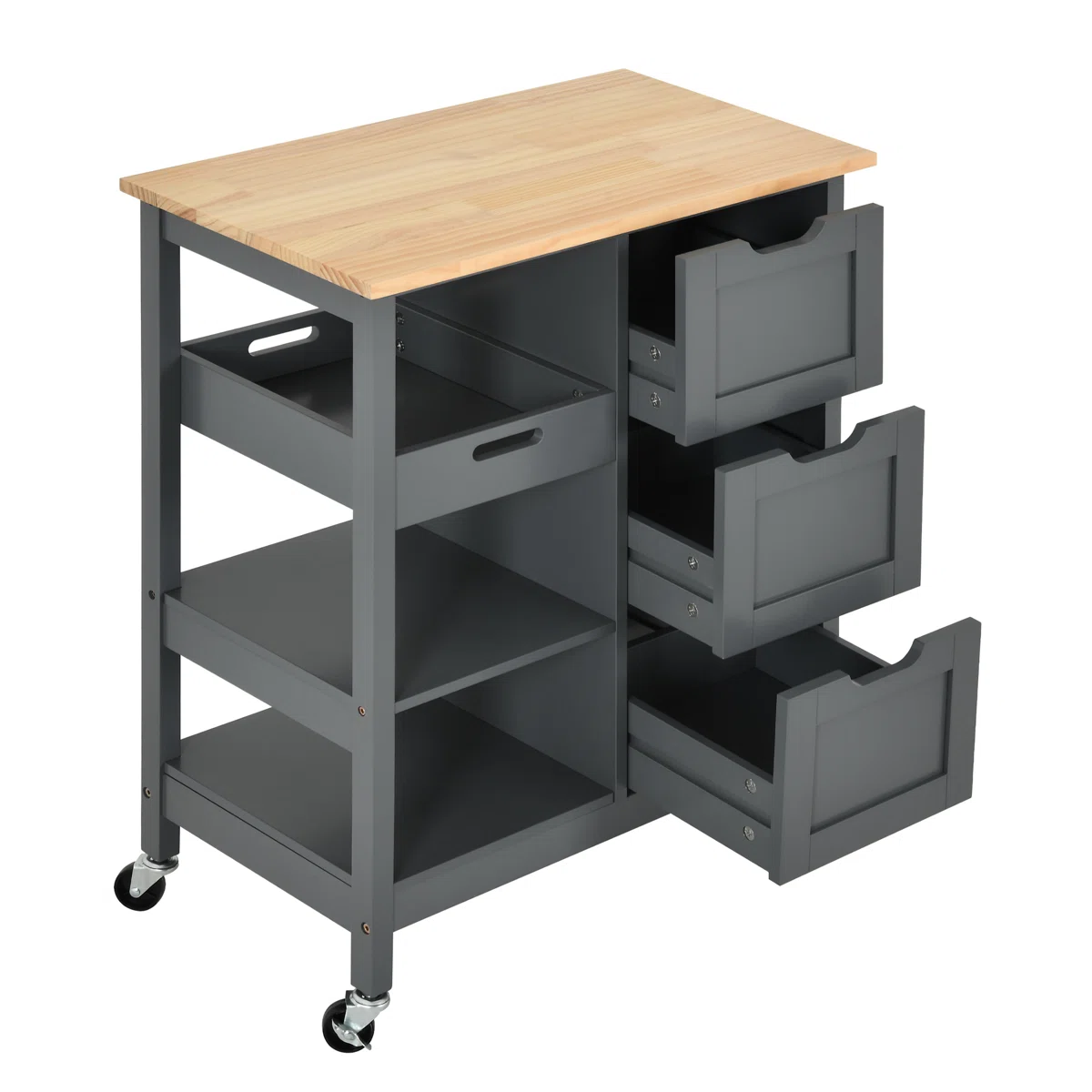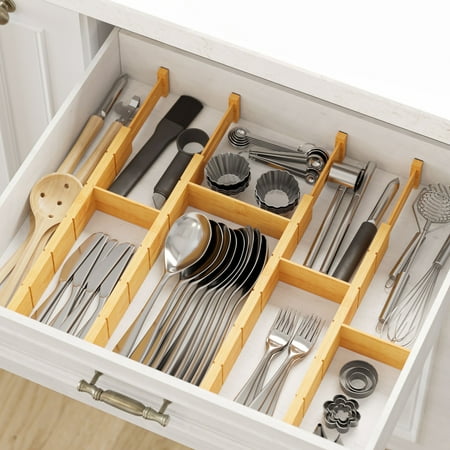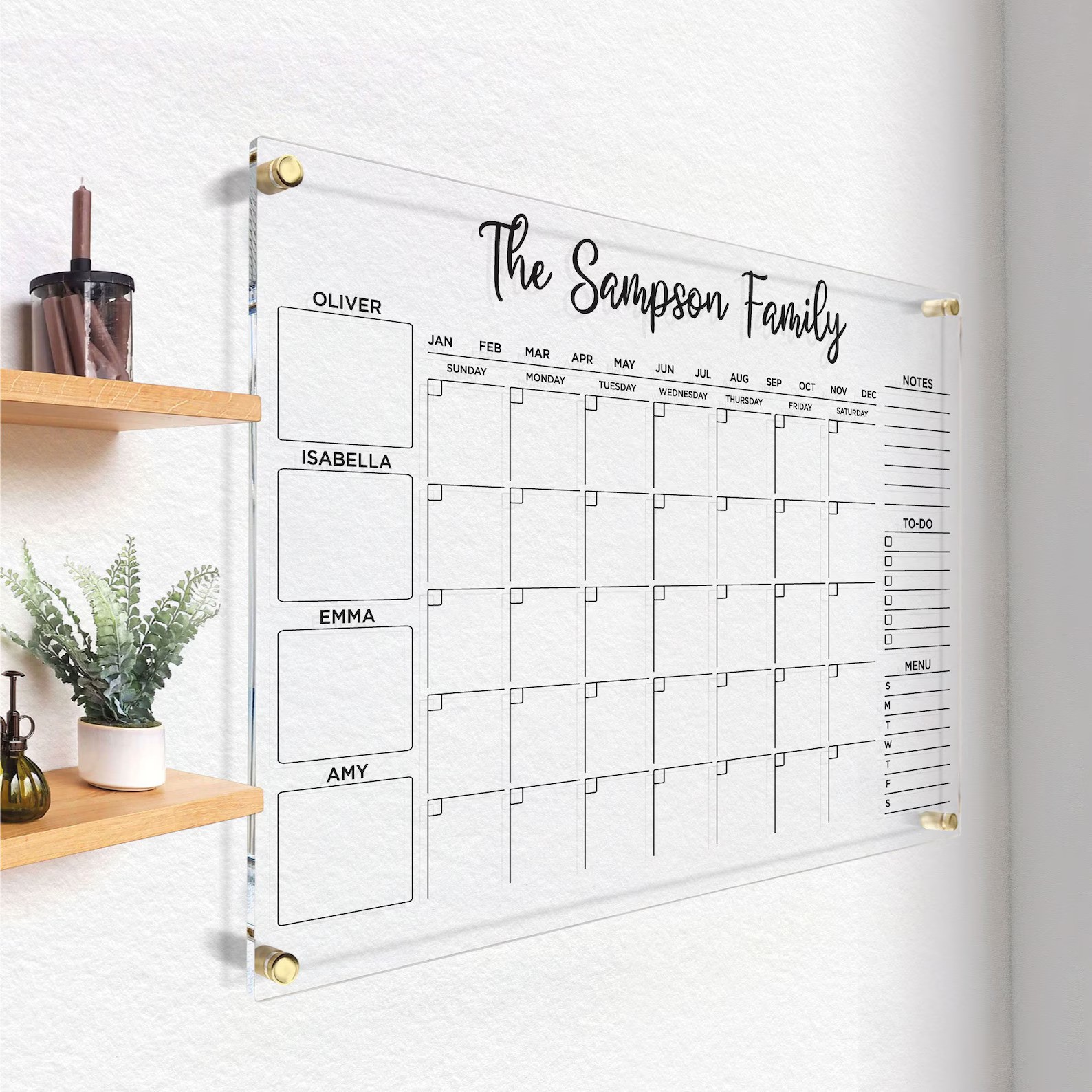Organizing a kitchen like a pro in 6 steps – and 35 ideas to get yours in the best shape ever ahead of a busy hosting season
Plus, the 6 key signs your current system isn't working for you

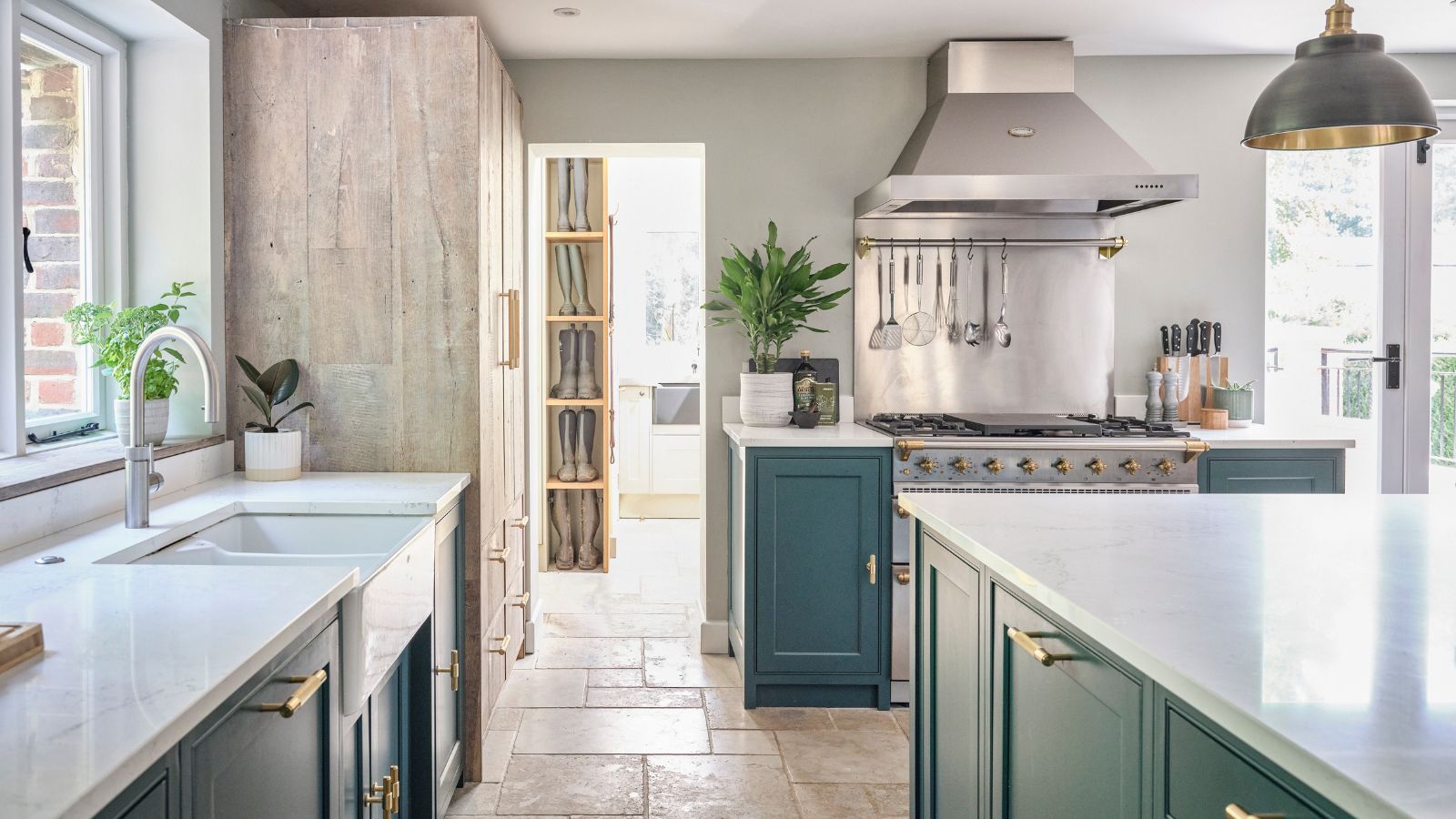
Organizing a kitchen is a mammoth task, but it is one of the most rewarding projects to tackle in your home.
A well-ordered space doesn't just look cleaner; it makes cooking easier, saves time, makes hosting more enjoyable, and can even help cut down on food waste.
Here, we have rounded up 35 of our experts' best kitchen organizing tricks to help you get started, with suitable home organizing tips thrown in to make the process less overwhelming.
Organizing a kitchen like a pro to serve you well all hosting season
When organizing a kitchen, be it for the first time or the 20th, following these steps will help prevent overwhelm:
- Empty everything out: One of the best ways to assess everything you own is to get everything out into the open and group items together by type and category. This is also known as the chaos decluttering method. Stick with the mess for the short term as it will make it easier to complete the task.
- Get rid of duplicates: Then, declutter your kitchen. If you have more of anything than you realistically need, get rid of the lesser quality or most worn versions. This will instantly free up some vital kitchen cabinet and counter space.
- Rethink single-use items: Think about how often you use any tools or gadgets that only have one very specific use, for instance, cutting a cake. For anything that rarely sees the light of day and can be done with other utensils, declutter.
- Clean: With everything out of your cabinets and drawers, take the time to clean the kitchen and wipe down storage with a non-toxic all-purpose cleaner, such as Attitude from Walmart. Using a DIY cleaning spray with essential oils such as peppermint or lemon will help naturally deter pests, too. Homemade scented vinegar ones are particularly effective at cutting through grime and cleaning well without harsh chemicals.
- Store by use: When putting items back into your kitchen storage ideas, put the items you use most in the most accessible spots (for instance, at arm level). The items you use least frequently can then go on the highest and lowest shelves, or at the back of cabinets.
- Schedule resets: Make it your goal to revisit your kitchen organization every month or so to reset any areas that have become chaotic or alter areas that do not work for your routine. It's sensible to do an expiration sweep once or twice a year so you're not cooking with, or eating sub-par herbs, spices, and ingredients.

The Environmental Working Group (EWG) has certified Attitude products as non-toxic, meaning they contain no harsh chemicals or artificial compounds.
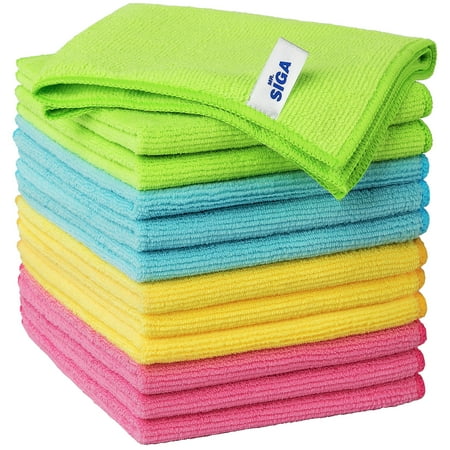
Microfiber cloths are machine washable, meaning you can reuse them for years with proper care. Simply wash after use on a warm water cycle and gentle detergent (skip the softener) to sanitize.

The Scrub Daddy sponge softens under hard water and toughens under cold water, allowing you to adjust the level of abrasive you need depending on the task at hand, and it won't damage your surfaces.
Signs your kitchen organizing system isn't working
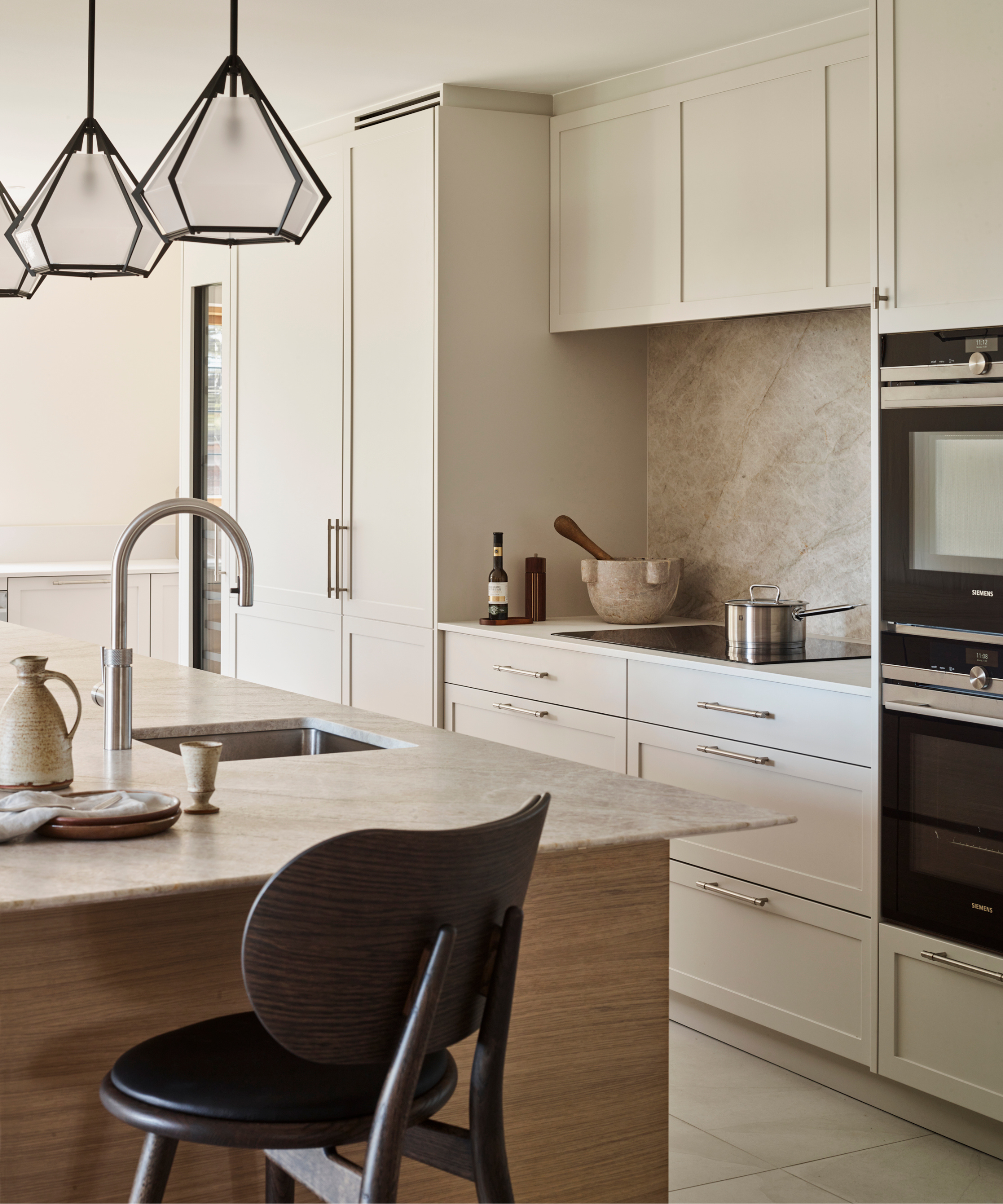
An organized kitchen makes cooking, hosting and enjoying the heart of your home much easier.
Many organizational systems don't work for every household, especially in a busy space like the kitchen, and pro organizers say there are some clear indicators that the system you have in place is not the best for your family:
- Clutter builds up: Jackie Pittman, professional organizer and founder of Chez Nous Organizing, points out, ‘A well-designed kitchen should have ample storage space for all your essentials, leaving your counters free for food prep.' If items are still building up, you need to change your system.
- You lose items regularly: Jackie continues, 'If you are still scrambling to find something in an organizing system, then it certainly is not working for you. It is time to re-evaluate.'
- Tidying feels like a chore: Meredith Goforth, organizer and founder of House of Prim, says, 'If it is too difficult to return an item to its designated home, it tends to get left out and becomes cluttered. I always encourage my clients to consider their routine, or the routine they want to have, and organize zones accordingly.'
- Nothing is flexible: Meredith says, 'Fixed labels don't work. You end up with storage containers that take up more space than they save. To rectify the situation, consider being more liberal with your labeling. You could even remove labels altogether.' However, storage bins with chalkboard labels from Wayfair that you can wipe and reuse are helpful if you find labels effective.
- Storage overflows: Any storage space that is overflowing or overstuffed is a sign that you need to reassess where and how you store things, or pick up some different decluttering tips that work better for you.
- You feel stressed cooking: This one is self-explanatory. If cooking a meal makes you want to tear your hair out, it's probably time to organize your kitchen better.
The kitchen organizing zones

Zoning areas of your kitchen when organizing it will increase functionality.
When organizing a kitchen, no matter if you are working with small kitchen ideas or a huge chef's kitchen, there are six key zones of kitchen organizing you’ll need to master to help create a good workflow:
- Food storage: Besides perishables (which will live in your fridge and freezer), you should aim to keep the rest of your food items together. Group items by category so you can access what you need quickly and easily.
- Cooking: From organizing pots and pans to utensils and baking dishes, you'll want to keep anything directly related to heating food near your oven and stove.
- Food prep: This is where you will prep food for heating, so ideally, you’ll want to designate this adjacent to, or as close to, the cooking zone as possible so you’re not having to carry ingredients across the kitchen.
- Cleaning: This zone encompasses your best dishwasher/kitchen sink, trash cans, and often your cleaning supplies cabinet.
- Kitchenware storage: The rest of your kitchenware, such as plates and cutlery, should then be stored close to your cleaning zone so that it is easy to put away after washing.
- Entertainment: Not all kitchens will have an entertainment zone (especially if they are on the smaller side). If you do have seating or kitchen island ideas, however, keep them away from the cooking zone so guests or family do not get in the way of the chef.
Kitchen organizing ideas

Our experts reveal their top kitchen organizing tips.
1. Organize by category
To improve flow and optimize storage to avoid duplicates, start by organizing your kitchen essentials by category, grouping like with like.
Design expertise in your inbox – from inspiring decorating ideas and beautiful celebrity homes to practical gardening advice and shopping round-ups.
We suggest picking and choosing the following categories to suit your belongings, space and needs:
- Dry foods, canned goods, and spices
- Pots, pans, dishes, and other cookware
- Baking essentials (for frequent bakers)
- Flatware
- Plates and bowls
- Glasses
- Special occasion china and other items used infrequently
- Dishtowels and cloths
- Kids’ plates, dishes, and cups (if applicable)
- Cleaning supplies (if these aren’t stored elsewhere in your home)
2. Use the FIFO method
Whether you are organizing kitchen cabinets or organizing a fridge, the FIFO method (first in, first out) can make cooking a breeze and reduce the risk of food waste.
As the name suggests, this method dictates that anything that goes into your storage is the first to come out again.
For example, the first yogurt tub you put in the fridge should stay at the front of the shelf, so that it is the first tub you use up. That way, it doesn't get pushed to the back and forgotten about, to go moldy.
3. Give everything a home
Assigning every item its own home is an easy organizing system that professionals love, as it makes finding items and putting them back again, simple.
As Catherine McCord, founder of Weelicious and author of Meal Prep Magic, shares, ‘When I’m thinking about meal prep and cooking in a home kitchen, the first thing I think about is "mise en place" which translates from French to English as “to put in place” or “everything in its place."
'To move quickly and efficiently in a restaurant kitchen, you need to be organized and have everything in its place.’
Instead of organizing in a way that looks visually appealing, McCord suggests taking a slightly different approach. ‘Put your ingredients together so you can produce as many meals as possible in a short amount of time,’ she says.
4. Prioritize accessibility
Tanya Smith-Shiflett, owner and co-founder of the interior design firm Unique Kitchens and Baths, says, ‘A home cook should steer clear of inserts or organizing systems that hide items or take away accessibility in any way. Cooking can be very active, so one movement to get to an item is always going to be more efficient!’
What this looks like varies by person, but consider ditching any organizing units that require multiple steps just to access what you need, for instance, having to open a drawer, then a lidded box, then a packed inside it.
Opt instead for accessible organizers such as Lazy Susans and tiered turntables, available at Amazon, which are designed to make things at the back of storage spaces quickly accessible.
5. Keep counters clear
Organizing kitchen countertops is the number one way to make any kitchen look more organized.
Diane Quintana, certified professional home organizer and owner at DNQ Solutions, says, ‘Keep the counters as clear as possible. Have only things out that you use all the time – like a coffee maker, toaster oven, and a crockery full of cooking utensils.'
We like this best-selling ceramic utensil pot set from Amazon, as it comes in a range of colors to suit any kitchen scheme.
Diane continues, ‘Use a small tray or basket to hold mail to keep it contained in one specific area. If the condiments are creating clutter on the kitchen counter, consider buying a single or multi-tiered lazy Susan from Target. This will contain the condiments and make them look organized.’
All prices are correct at the time of publication.
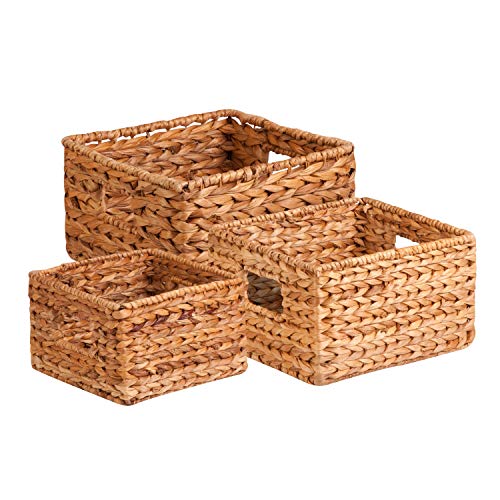
This nesting basket set is ideal for keeping kitchen counter clutter contained and hidden while keeping it easily accessible. They can also be easily stacked together and stored away when not in use.
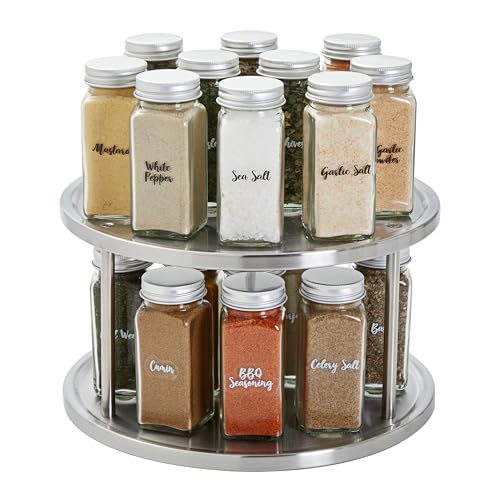
Lazy susans make use of vertical space while ensuring everything stored on them is easily accessible, making them ideal for counters, fridges, and cabinets.
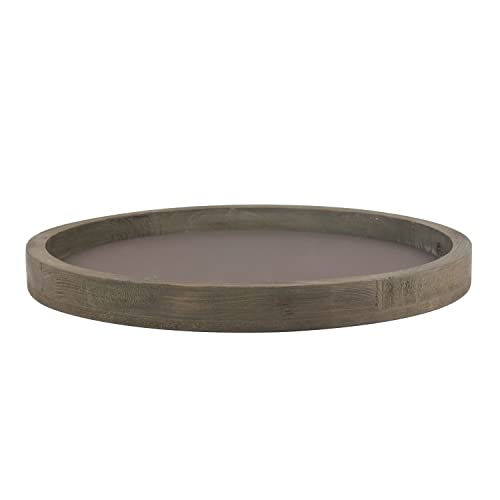
Keeping your kitchen essentials together on a tray can make them look more purposeful and less like clutter without needing much headroom.
6. Install an appliance garage
Appliance garages are the perfect way to make a kitchen look more streamlined without sacrificing functionality.
As the name suggests, this is a hidden-away section on a counter or inside a cabinet where your appliances live and can stay plugged in.
Whenever you need them, simply open the doors, slide the appliance out, and then pop it back after use. These adhesive appliance sliders, from Walmart, make this easy and reduce the risk of scratching work surfaces.
7. Use a back kitchen
Suppose you have the space and want to keep your main cooking space nice and minimal. In that case, you can keep the bulk of your kitchen storage off to one side – in a back kitchen, utility room, or a walk-in pantry, suggests Tom Howley, design director of the eponymous kitchen company.
He suggests, ‘A well-designed utility room can include a washing machine, tumble dryer, sink, ironing board and iron, extra storage for shoes, and even additional pantry space.'
This takes some of the pressure off the main kitchen, so you can keep cooking calm.
8. Use the golden triangle
Although more of a consideration when designing a kitchen, Barbara Brock, founder and CEO of Barbara Brock Inc., a professional organizing and staging company, says, 'Arranging your three key appliances (the stove, the fridge, and the sink) in the golden kitchen triangle can improve the flow of your kitchen, making it easy to move between the three key zones while cooking.'
With this triangle established, you can better organize your key kitchen zones.
9. Minimize shelf clutter
Kitchen shelving ideas can offer quick access storage for any space, but they can quickly make a kitchen look cluttered and can be difficult to maintain. Not to mention that delicate items risk being damaged.
For this reason, it is important to avoid common open shelving mistakes, such as overloading the shelves or keeping crockery on display. Keep shelves minimal for easy upkeep.
You can place less frequently used items in decorative baskets and keep them on shelves or make use of the space above kitchen cabinets. Baskets create order amidst the chaos while enhancing the overall appearance of the kitchen

Measuring 8x10x11 inches, these handwoven water hyacinth baskets are ideal for drop zones, shelves, and cabinets.
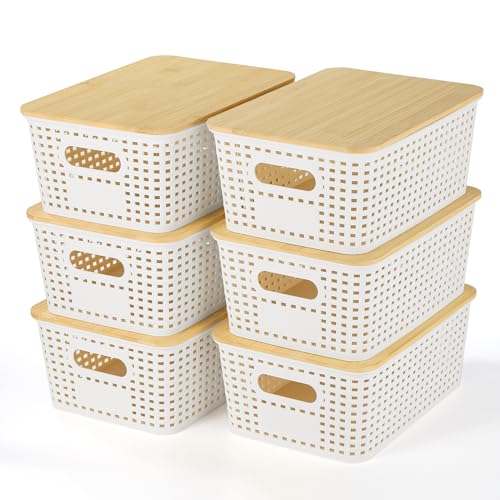
These stacking bins are ideal for items that need ventilation, such as food packets or bathroom products, helping to keep them neat without the risk of mold or odors.
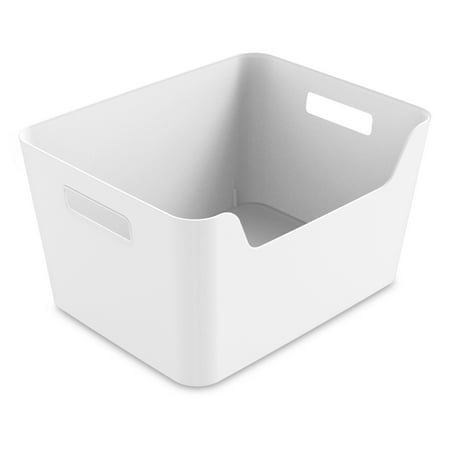
These drop-front acrylic bins are easy to keep clean and offer easy access to products stored inside.
10. Divide drawers
According to Annie Downing of Annie Downing Interiors, organized kitchen drawers play a major role in an efficient kitchen.
‘Utilize deeper drawers for storing pots and pans and open shelving for easy access to dishes,’ she says.
When you are organizing them, again, consider what your priorities are. Common sense dictates positioning spices, plates or pots and pans (or all three) near the oven or hob, or cutlery near a dining table; equally, top drawers are best reserved for items you use the most often, with those you have to bend to access for items you use less often.
However, everyone uses their kitchens and cooks differently, so if you will use a tech drawer more than you will use a spice drawer, give that priority positioning.

Crafted from bamboo, these adjustable dividers expand from 12-1/2" to 16-1/2" to fit various drawer sizes. The spring-loaded mechanism ensures a secure fit, while the rubber pads prevent slipping.
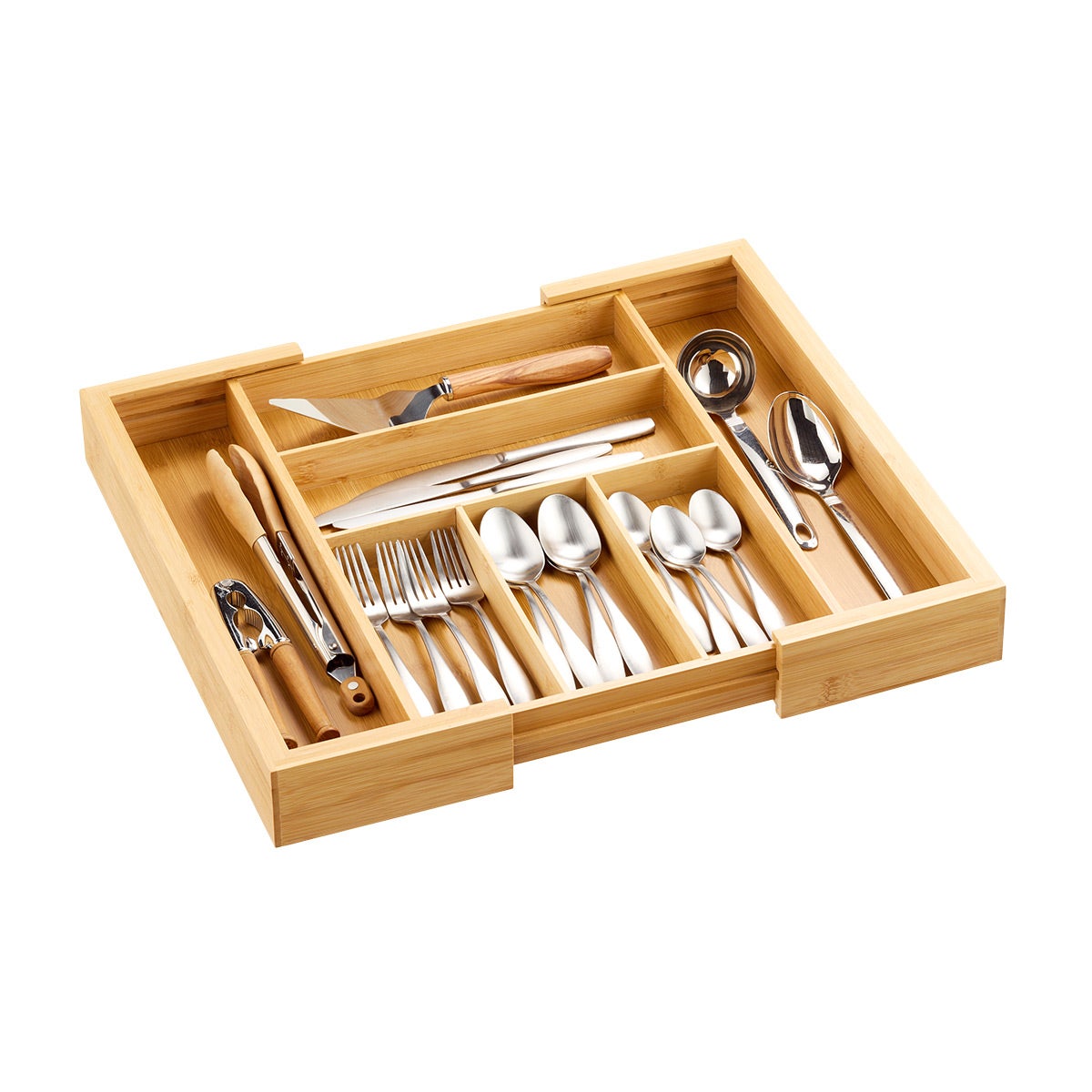
Crafted from durable bamboo, this organizer seamlessly expands to fit most kitchen drawers, accommodating your flatware and utensils with ease.
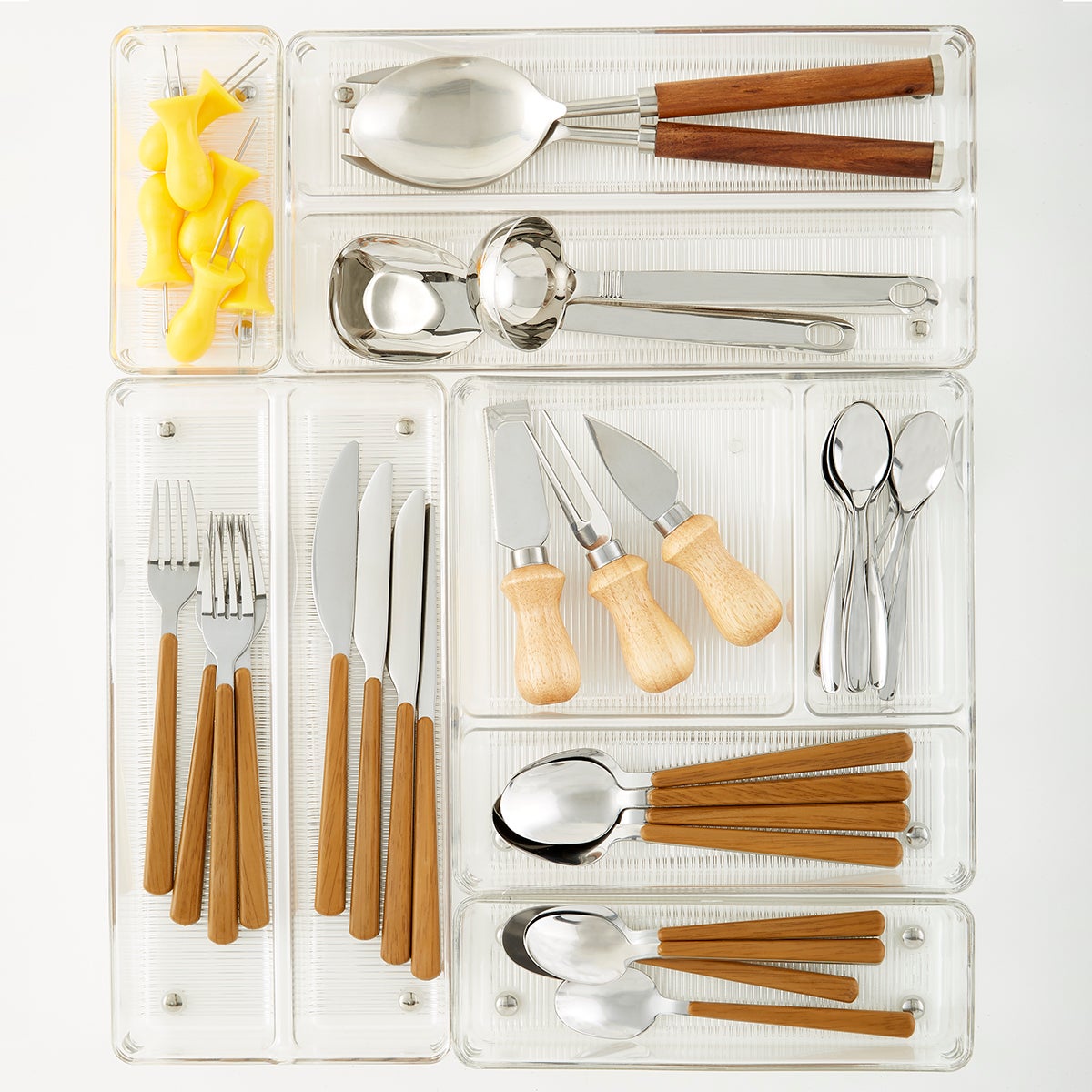
Molded from clear, virtually unbreakable Resipreme plastic, the iDesign Linus Shallow Drawer Organizers are essential for adding custom storage to any drawer.
11. Double up cabinet storage
Make your kitchen cabinet ideas work harder by splitting up tall shelves with expanding tiered shelf risers, from Walmart. This can give you double the storage space without having to fit a whole new kitchen.
Alternatively, for deep cabinet shelves, use these three-tier gradual risers from The Container Store to help make cans and jars more visible, so you do not have to dig through your supplies. They even have a drawer compartment in the base for packets to make use of every inch of space.
12. Maximize corner cabinets
Courtney Cummings, professional home organizer and owner at The Stylish Organizer, urges, ‘Make friends with your kitchen corner cabinets. You don’t want to waste any space.
‘Opt for lazy susan style lower cabinets or pull-out cabinets that take full advantage of the corners. These cabinets are great for pantry backstock items, less-used smaller appliances like blenders and food processors, and smaller bakeware items.’
If you do not have custom pull-out cabinets, you can buy DIY corner cabinet pull-out units from Amazon.
13. Use pull-out shelves
One of the best ways to maximize kitchen storage without new cabinets is to add pull-out drawers to cabinet shelves.
Cabinet pull-outs, available at Amazon, make accessing the very back corners easier, so no space is wasted, and you do not have to hunch over and take everything out every time you need that ice cream maker you only use twice a year, or the stand mixer that weighs a ton.
14. Use clear bins
To prevent items from getting lost or being forgotten in larger kitchen cabinets, consider opting for all transparent containers.
Catherine Snowden, professional chef and food blogger at Fascinating Sky, says, 'Clear storage containers keep your cooking space organized. Store dry items like rice, pasta, and ingredients for baking in them.
'They will appear compact and tidy, and you will be able to quickly view the contents and keep track of your cupboard supplies.’
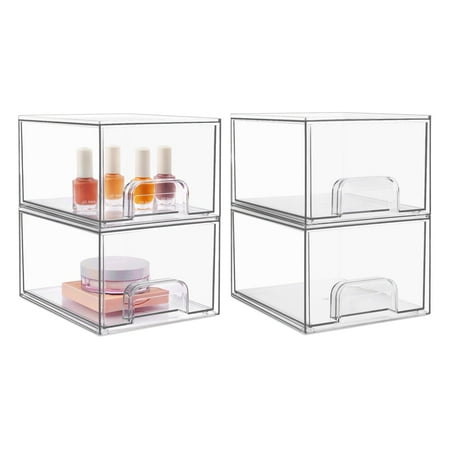
Make better use of vertical storage to save space on shelves by using stacking drawers in pantries to store snacks and packet goods.

These smaller glass storage boxes are an eco-alternative for leftovers that keep food fresher for longer.
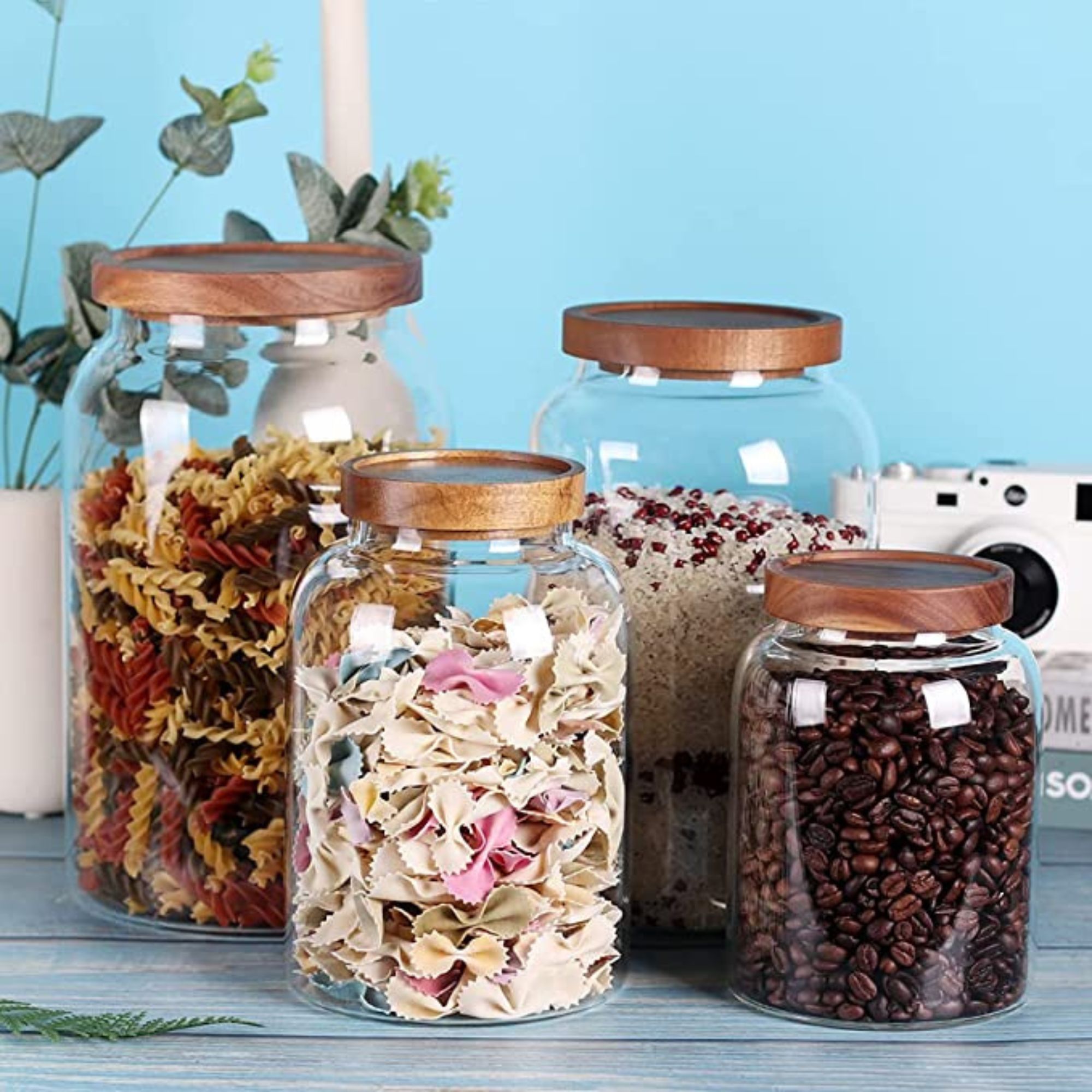
This large glass jar has an airtight wooden lid, making it a stylish storage alternative for food goods.
15. Tame Tupperware
Organizing Tupperware and plastic containers can feel like a constant battle.
The Elfa 5-section pull-out mesh storage, from The Container Store, offers the perfect solution, holding all of your stacked containers and lids neatly, stopping a tsunami of mess every time you open your cabinet.
Then, don’t forget to use freezer-safe labels from Walmart to mark what's inside and the date it was made when storing leftovers.
16. Use vertical storage
A hallmark of good kitchen organization is floor-to-ceiling kitchen storage.
Not only does it make the room feel polished, but it gives you ample space to hide away clutter and keep countertops clear, explains Katy Wells, home organizer, Founder of Clutter Cure Club, and host of The Maximized Minimalist podcast.
That being said, there are some great ways to make use of vertical storage that don’t require a new kitchen.
Katy says, ‘To help keep your countertops free from stuff, take advantage of the vertical spaces behind pantry or cabinet doors with over-the-door organizers. These can be great to organize and store snacks, spices, condiments, or any item that you want accessible, but not visible.’
17. Use mobile storage
Stuck with small kitchen storage? Brenda Scott, professional organizer and owner of Tidy My Space says the smartest option is to hand-pick some multi-purpose furniture that offers you both workspace and storage space.
A good option is a wheeled cart or movable island that can be moved into action and hold a variety of important kitchen goods, she suggests.
'Keep in mind that there are many different ways to use different furniture pieces. Think outside of the box!’
18. Try pegboards
Pegboards are one of the many storage products professional organizers can't live without, and can prove invaluable when organizing a kitchen for ultimate accessibility.
Wall-mounted peg boards, from The Container Store, can help to add extra vertical storage to save space, creating room for pans or commonly used utensils to hang in easy reach.
Drawer and cabinet pegboards, such as the Umbra Peggy Organizer Tray, from Amazon, can keep stacked items neat or be used to stand pans on edge to make extra space.
19. File-fold towels
File folding is usually reserved for dressers, but it can be a practical way to bundle up kitchen towels when organizing a kitchen.
These concise packets stay folded even when you have to rifle through a drawer, making it easier to close the drawer afterwards without having fabric sticking out at awkward angles.
Plus, it prevents your towels from creasing in storage, so they look far nicer when you pull one out to hang on the hook or over the oven.
20. Keep spices together
There are several ways of organizing spices to avoid scrabbling around in the back of cabinets and frequently ending up with multiple purchases or out-of-date herbs.
kitchen designer Sam Hart, of Roundhouse, says, ‘One of the most popular methods is to add a spice rack or two to the back of larder doors, which means the jars sit at eye level with the labels facing out clearly visible.
‘But I also rate using kitchen drawers to take spices, with the jars laid flat to show the labels. You can get a surprising number of jars in a slimline drawer and, placed close to the cooktop, they’ll be easily accessible when cooking.’
The most logical way to curate a herb and spice collection is alphabetically.
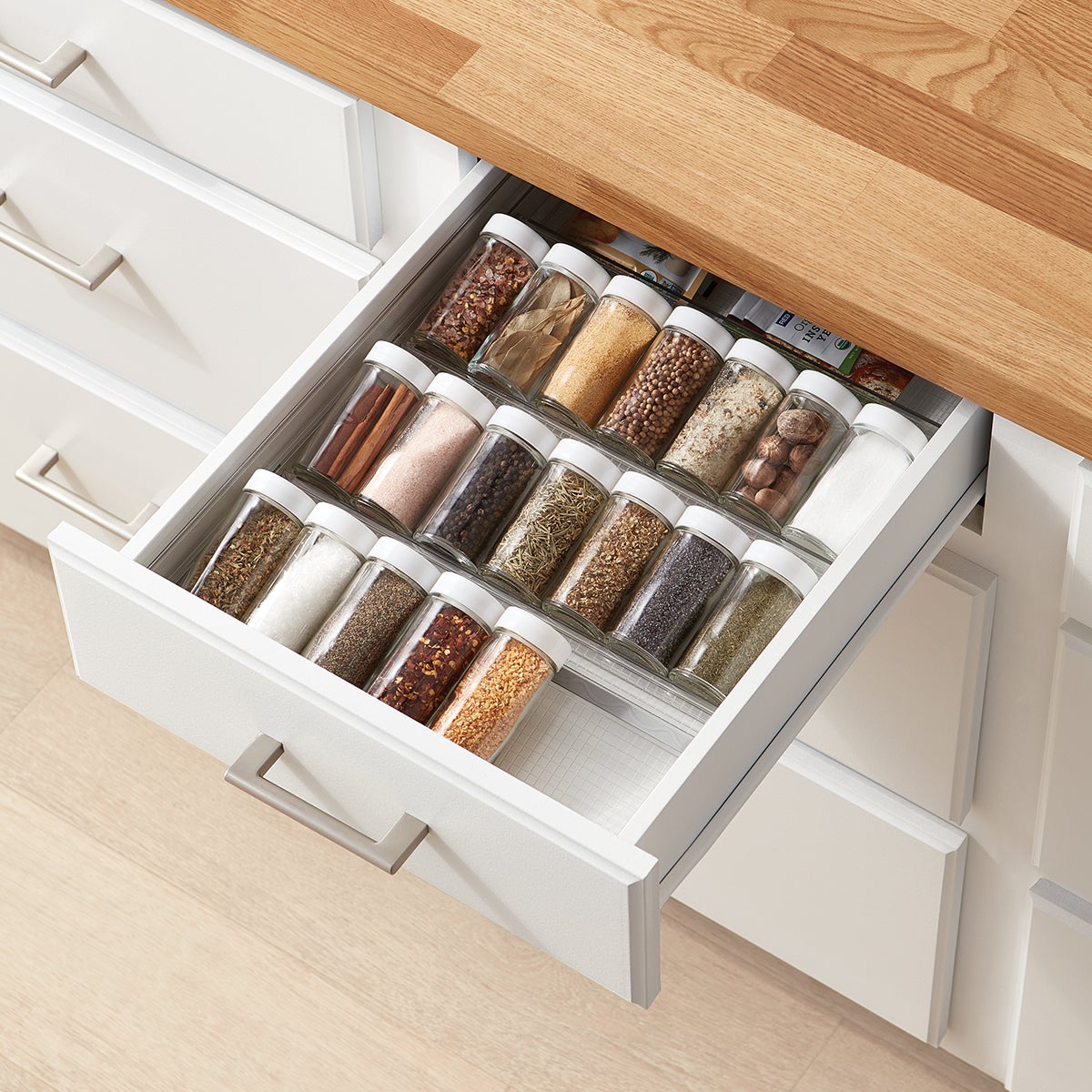
Keep your spices organized and easily accessible with this clear in-drawer spice organizer that holds up to 21 jars.
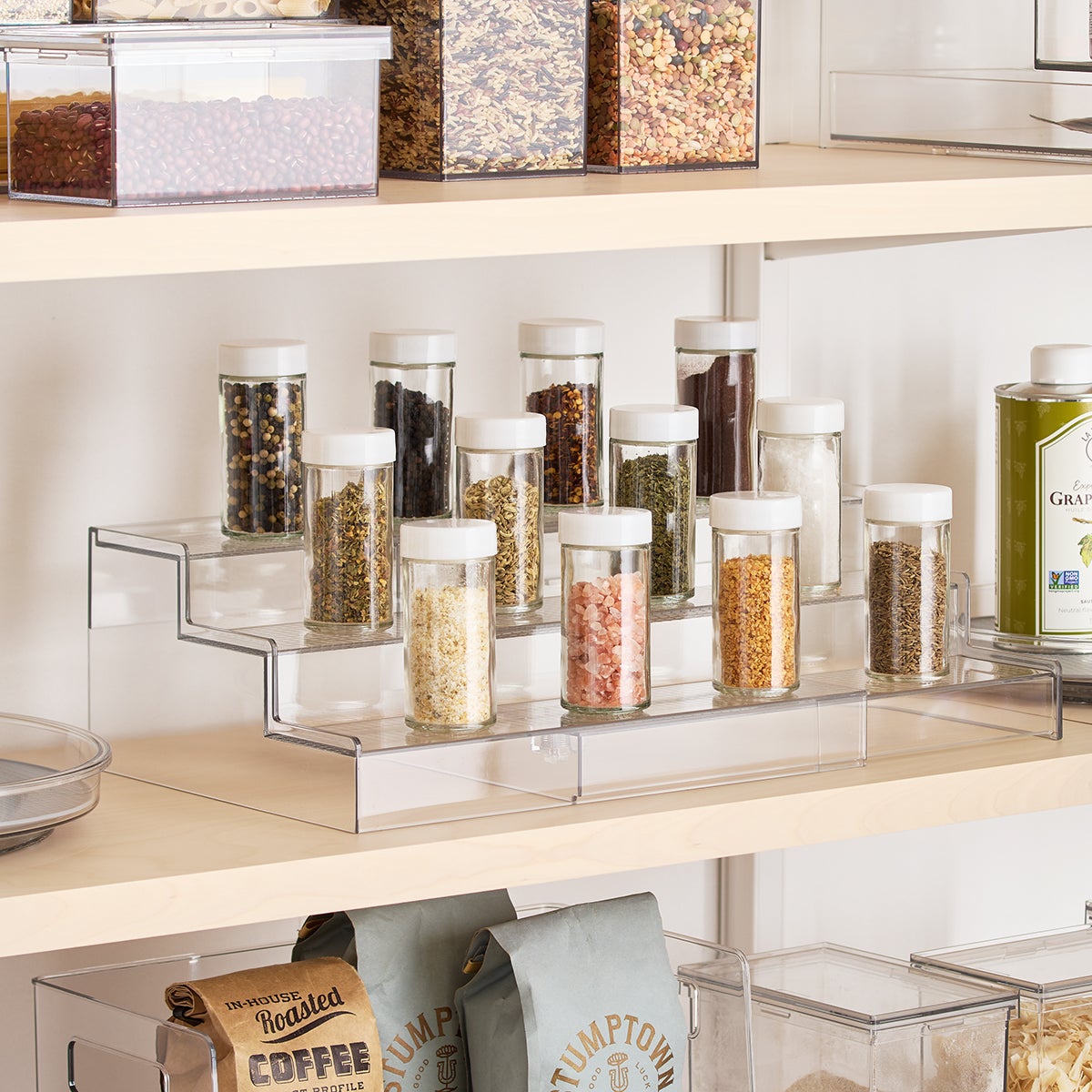
This expandable shelf effortlessly adjusts to fit perfectly in various spaces, eliminating gaps with its straight sides and squared corners.
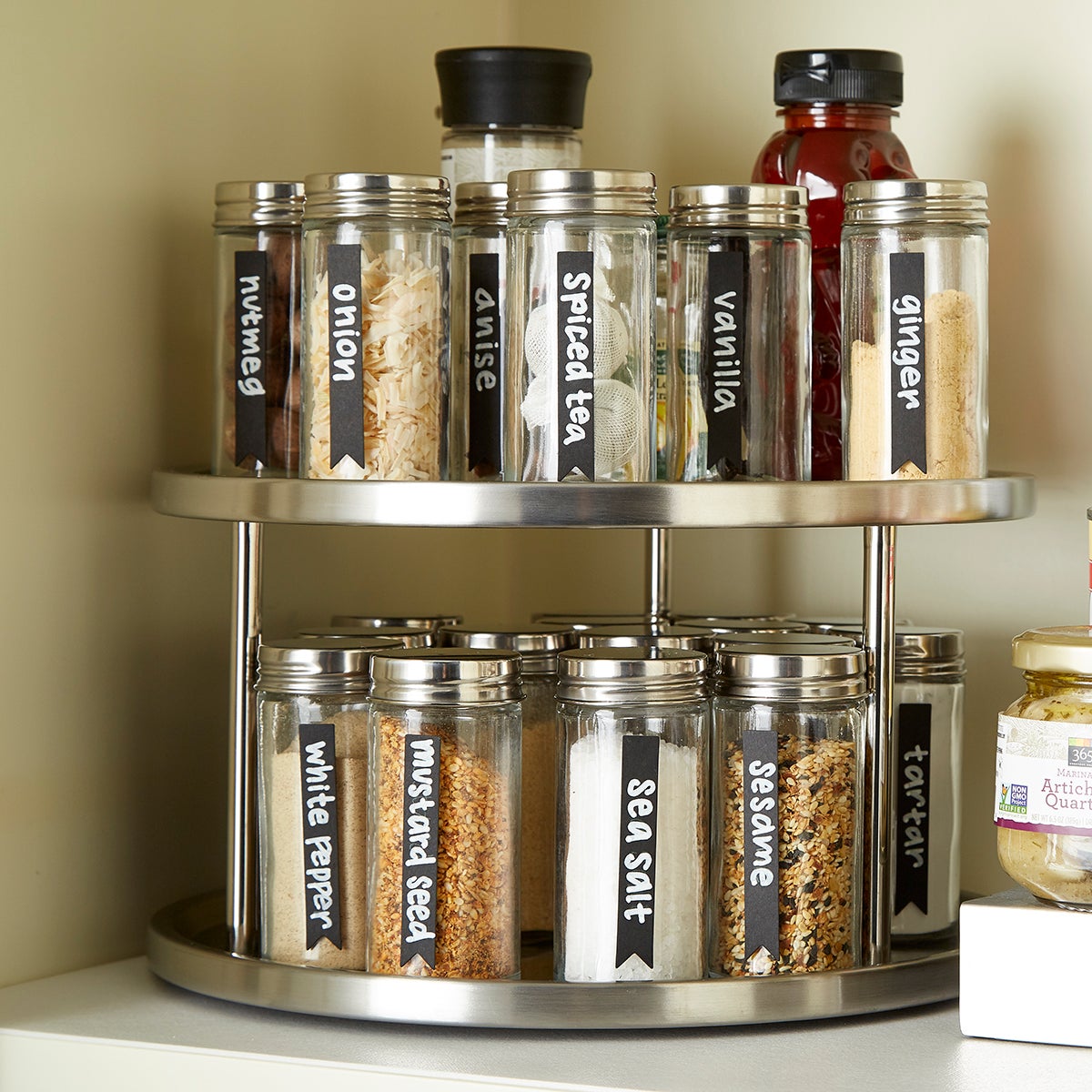
Crafted from durable and rustproof brushed stainless steel, this efficient and hardworking helper provides convenient access to your bottles, jars, and cans.
21. Label everything
If you decant your food goods, or like to have a system that anyone in the family can follow, consider labeling everything.
You can buy pre-printed labels from Amazon for the most common pantry staples, plain labels for chalk pens, or create your own with a label maker, such as the DYMO label maker, from Walmart, which will also come in handy to execute your utility room organization ideas.
22. Keep food fresh
Upgrading your food storage ideas can help to reduce food waste.
When organizing a kitchen, ditch mismatched plastic containers in favor of glass food container sets from Walmart. Not only do they keep food fresher, but they also help to create a non-toxic home, too. Similarly, these OXO vacuum jars, from Target, can stop food such as cookies from going stale.
It is also worth investing in some food bag clips, also from Walmart, to keep half-empty packets of food fresh while minimizing spills.
23. Repurpose containers
Want to organize your home without spending any money? Or simply want to be more sustainable at home?
Rather than buying all new bins, consider repurposing packaging to organize a kitchen.
Recycled glass jars that have been washed out make for excellent containers for decanting dried food goods such as rice, sugar, and beans, while adding a little rustic charm to your home organizing ideas, says Rachel Sicherman, a professional organizer and founder of Tidy Made Easy.
Similarly, reusing old boxes (such as old gallon ice-cream tubs) that are sturdy and in good condition is a great way to get those pesky loose bags and bits tidied up, adds Nancy Traylor, professional organizer.
24. Keep non-cooking items out
Where possible, it is also helpful to keep non-cooking-related items out of the kitchen to give users more space to prepare food and help to reduce stress.
For instance, work and school bags or laptops are items to never store in a kitchen. Leaving them in the living room or entryway is far better for a relaxed routine.
While these items are essential to getting ready to leave the house in the morning or start a day of work, they are also distractions that take you away from the main task at hand. There is also nothing more infuriating than tripping over an abandoned bag with a full mug of coffee.
25. Create a tech nook
In a modern home, kitchens have become truly multipurpose spaces where we work, relax, and entertain. As such, it’s no longer just the kettle and toaster that are to blame for cluttering up countertops and adding visual ‘noise’ in the kitchen.
Richard Moore, design director, Martin Moore, reveals, ‘Alongside breakfast cupboards, we’re increasingly asked for "tech drawers".
‘These powered-up drawers are extremely handy for those who work from home and also for those with teenagers! They hide away ugly wires and chargers when not in use, keeping counter space clutter-free, as well as storing everything in one neatly organized place.’
26. Keep wine chilled
Charlie Smallbone, founder of Ledbury Studio, suggests, ‘If you enjoy wine and have sufficient space in your kitchen, a dedicated bar zone can be an attractive addition to the room, so that drinks can be served away from the main cooking area.
‘A wine cabinet for cooling white wine and a wine rack for storing room temperature reds are useful, as is storage for glassware.’
If you don’t have space for a separate bar, a wine cabinet built under an island, preferably close to bar stools, bar carts, or the dining table so that bottles are in easy reach, makes a practical addition to a sociable kitchen design.
27. To decant, or not to decant
Decanting food goods can be a good way to make a kitchen look more uniform, save space by collecting several half-empty packets, and help make food last longer.
However, it is not for everyone.
For instance, Marissa Hagmeyer, Co-Founder and COO of NEAT Method, says, ‘Home chefs who cook frequently may opt against decanting spices and oils in their kitchen because they buy in larger quantities and run through them more quickly.
'For those who take a longer time to work through a single jar of basil, it makes more sense to streamline and decant because you’re replacing it less often.’
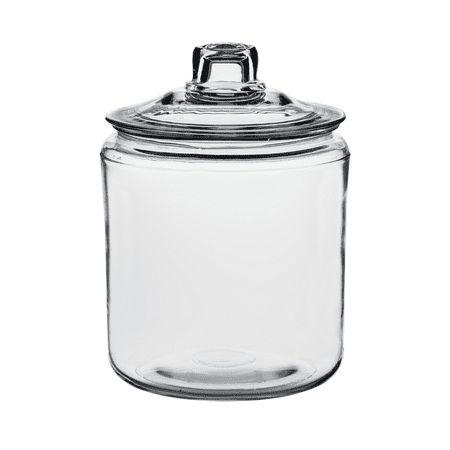
Made of clear glass that does not stain, warp, or retain smells, unlike plastic jars.
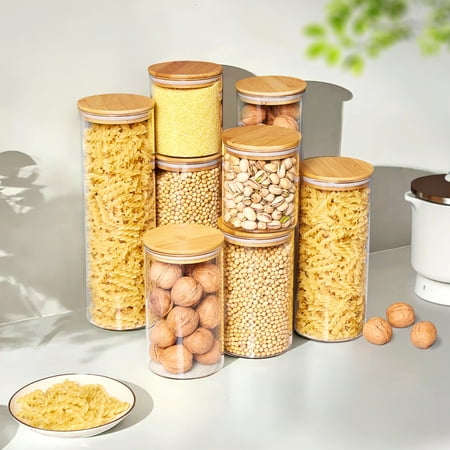
These containers are equipped with airtight lids to preserve freshness and prevent leaks, perfect for long-term storage.
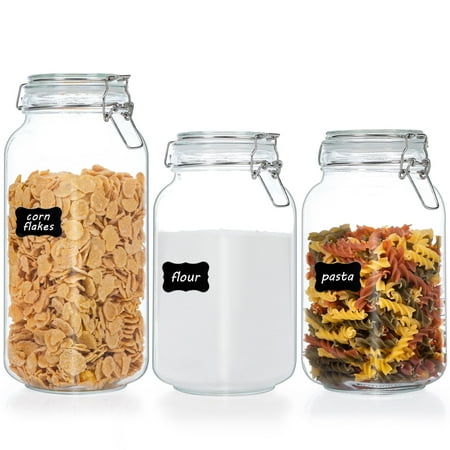
Made of premium BPA free durable food-grade glass, these kitchen canisters are sturdy enough for everyday home use.
28. Child-lock lower cabinets
If you have children or very curious pets, adding child locks can help to keep everything safe and organized.
Karina Toner, Operations Manager at Washington-based cleaning company, Spekless, says, ‘Installing childproof locks [from Walmart] on cabinets containing hazardous items like cleaning supplies or sharp utensils ensures a secure environment.
'This safety measure not only prevents accidents but also offers peace of mind, allowing children and pets to explore and engage in the kitchen without compromising their safety.'
29. Set up snack stations
Snacking is a normal part of most of our days.
To avoid pantries and cabinets being torn apart and becoming disorganized, keep ready-to-go snacks in drop front bins, from Target, so it is easy to reach in and grab what you need without having to rifle through.
Plus, this system allows you to see what you are running low on, perfect for adding to shopping lists mid-week.
30. Add a command center
One thing the most organized families have in common is a shared calendar or family planner that everyone can access easily. For Aimee Hutzell, professional organizer and Founder of Inspired Living NW, this means putting it in the kitchen:
‘As the heart of the home, it’s also the best place to locate your household hub. This is a dedicated spot where you post your family calendar and weekly schedule, plus things like your meal plans for the week.
‘Making the schedule visual and visible encourages morning conversation about the day ahead and reduces last-minute stress.’
31. Create a breakfast zone
One of the easiest ways to organize a kitchen for a better morning routine is to create a dedicated breakfast bar to keep every morning essential contained close together, suggests Nicola Davis, professional organizer and Founder of Tranquil Home.
‘For example, use one shelf or area in your pantry for tea, coffee, cereals, oatmeal, and bread. You can then use storage baskets or containers to put items in to create more space and define clear categories,’ she recommends.
32. Take storage out of the kitchen
Although it is more practical to keep all of your kitchen and food-related items in the kitchen itself, sometimes, storage doesn’t stretch to our needs.
For this reason, Cori McDougald, professional home organizer and founder of Meat and Potatoes Organizing, looks elsewhere in the home for spare storage.
In these cases, she says, 'we will only want to be storing kitchen items we use daily and weekly, in the actual kitchen. All other items being used monthly or seasonally are to be stored in a key storage area of the home.
‘You’ll be surprised at how much easier your kitchen is to manage with much fewer items. Getting down to the basics feels so good, especially in kitchen spaces!'
33. Make islands multifunctional
Kitchen islands can do more than offer seating. Organizing a kitchen island well can create a huge amount of extra storage for a kitchen, while doubling as a table and food prep surface.
Start by determining what functions will benefit you the most in this space.
For example, consider integrated storage space, having a sink or a stove on a kitchen island, or installing a discreet charging station within the island, including outlets and USB ports.
To avoid dead space, have your island fitted with drawers or cabinets, or even shelving around the edges, to keep cookbooks and essential appliances out of the way.
34. Avoid overstuffing
Laura DeJohn, professional organizer and Founder of All Checked Off - Professional Organizing, urges you to avoid overstuffing your storage if you want your kitchen organization to last.
‘Everyday kitchens should be functional and efficient,’ she explains. 'Even though you are likely to hide things behind cabinet doors, stuffing them full of kitchen gadgets and excessive storage caddies will only create chaos.'
35. Don't forget the sink
Sticking to some strict kitchen sink organizing rules makes cleaning up after cooking quicker, easier, and more hygienic.
Investing in a good kitchen sink caddy, such as this Joseph Joseph organizer from Wayfair, for instance, will keep all your dishwashing essentials close at hand, while allowing your brushes and sponges to air dry properly, minimizing odors and bacterial growth.

With a fresh lemon scent and a concentrated soap formula, Dawn Powerwash works five times faster than regular Dawn dish soap to break down grease, limiting how much you need to scrub.

Sponge cloths are plant-based, meaning they are free from plastics and decompose in compost heaps in around 10 months, making them a eco-friendly, hygienic alternative to traditional sponges and paper towels.

This easy-grip scrubbing brush is suitable for scrubbing tough grease and grime from your cookware. Be careful on non-stick surfaces, however, as it could damage the coating.
Really want to get into the nitty-gritty of organizing a kitchen? Break tasks down into localized zones and work on pantry organization ideas, next.

Chiana has been at Homes & Gardens for two years and is our resident 'queen' of non-toxic living. She spends most of her time producing content for the Solved section of the website, helping readers get the most out of their homes through clever decluttering, cleaning, and tidying tips. She was named one of Fixr's top home improvement journalists in 2024.

